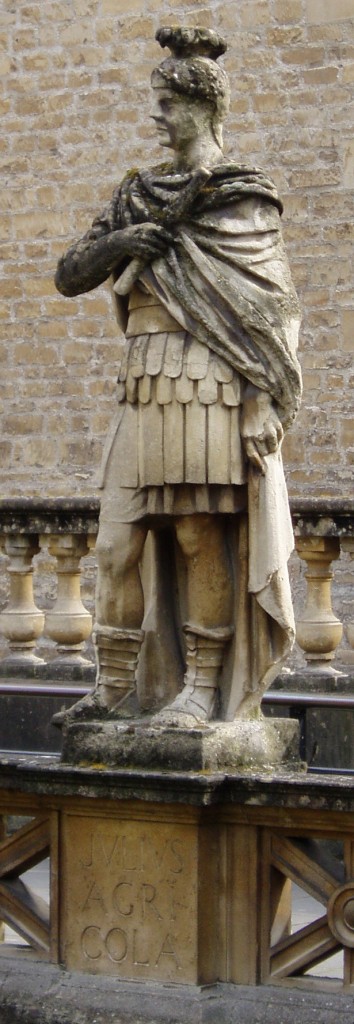WordPress database error: [Got error 28 from storage engine]
SELECT t.*, tt.*, tr.object_id FROM wp_terms AS t INNER JOIN wp_term_taxonomy AS tt ON tt.term_id = t.term_id INNER JOIN wp_term_relationships AS tr ON tr.term_taxonomy_id = tt.term_taxonomy_id WHERE tt.taxonomy IN ('category', 'post_tag', 'post_format') AND tr.object_id IN (5096) ORDER BY t.name ASC
080 Gnaeus Julius Agricola in Scotland
Gnaeus Julius Agricola was sent in the year AD77 to be governor of Britain for the Roman Empire. He pushed the Empire’s reach northwards with advances to the valley crossing Scotland from the Clyde to the Forth in AD80. He enforced the front with a row of forts before continuing with campaigns up the east of Scotland in AD83 as far as the Moray Firth, using a fleet to supplement the supply lines.
The Highlands were not penetrated by the Romans, whose legions were in fact soldiered not by men of Rome but by Romanians, better suited to the bitter climate.
Gaius Tacitus, Agricola’s son-in-law, wrote a biography of Agricola, including his time as Governor of Britain. On an untraceable site, called Mons Graupius by Tacitus, thirty thousand Caledonii amassed, led by Calgacus, to battle with the Empire. With their unique formations, weaponry and tactics the Romans won the day. After taking hostages however, the Romans retreated, whilst their fleet sailed to Fair Isle and Orkney to investigate the topography of the British Isles. Agricola returned to Rome in AD87 with distinction. Archaeologists believe Mons Graupius to be in the north-east around Raedykes.
Related Blog Posts on the Romans in Scotland

The Road to Dere Street
Read More






